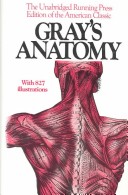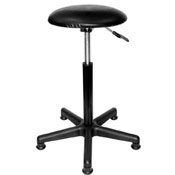The body speaks volumes in small nuances of positioning. I often will pose people standing as well as sitting. The skeleton provides the framework for the body. A sitting position will naturally bend limbs like arms and legs. A limb that is bent also provides visual interest since it is less static.
If you ask a person to sit, s/he feels like they are “doing something.” Yet this helps them relax. More often than not, a relaxed subject will allow you to “see” into their persona. This makes for a better portrait.
If there is a height disparity in subjects (2 people in the scene/frame) it often alleviates the difference when they are seated.
If you choose to show hands in your portrait (I often do since I feel that hands can help provide storytelling fodder about the subject) make sure you deliberately position them with care. A seated position naturally allows for positioning in a lap rather than dangling arms at the side.
Some people photograph better standing but make sure you try a seated position too. I think you’d be surprised at results. It goes without saying that if you are using studio lighting that you must adjust your lights, but it’s well worth your time to try a seated pose.



 The human skeleton is the supporting framework for the attached muscles. Skin and clothing cover muscles, lending shape to the form. Viewers will detect in a minute when something drawn doesn’t “look right” in a drawing of the human body but often cannot identify the “why.” Drawings can be telltale, but cameras aren’t supposed to “lie.”
The human skeleton is the supporting framework for the attached muscles. Skin and clothing cover muscles, lending shape to the form. Viewers will detect in a minute when something drawn doesn’t “look right” in a drawing of the human body but often cannot identify the “why.” Drawings can be telltale, but cameras aren’t supposed to “lie.” A posing stool has a smaller surface area in the seat. This naturally helps the model resist the temptation to inadvertently rest thighs on the entire seat or slump into the backrest portion like a chair would have. You’ll still need to observe that the person doesn’t find a way to press those thighs against the seat. The adjustable stools for height are good so the model can rest the sole of the foot on the floor. Adjustable stools will accommodate variances in height. Adjust it for the height of the person. Keep them comfortable. If the knee is much higher than where the join of the leg attaches, you’ll need to adjust the seat height upward. You don’t want a person with knees scrunched up unless it’s obviously intentional.
A posing stool has a smaller surface area in the seat. This naturally helps the model resist the temptation to inadvertently rest thighs on the entire seat or slump into the backrest portion like a chair would have. You’ll still need to observe that the person doesn’t find a way to press those thighs against the seat. The adjustable stools for height are good so the model can rest the sole of the foot on the floor. Adjustable stools will accommodate variances in height. Adjust it for the height of the person. Keep them comfortable. If the knee is much higher than where the join of the leg attaches, you’ll need to adjust the seat height upward. You don’t want a person with knees scrunched up unless it’s obviously intentional.
 Apologies, WordPress was crabby last night and didn’t insert the images or tags.
Apologies, WordPress was crabby last night and didn’t insert the images or tags.
